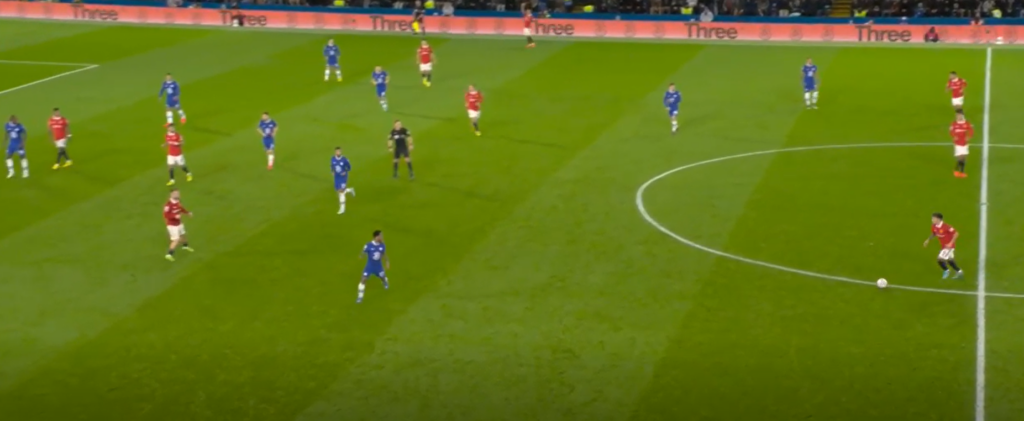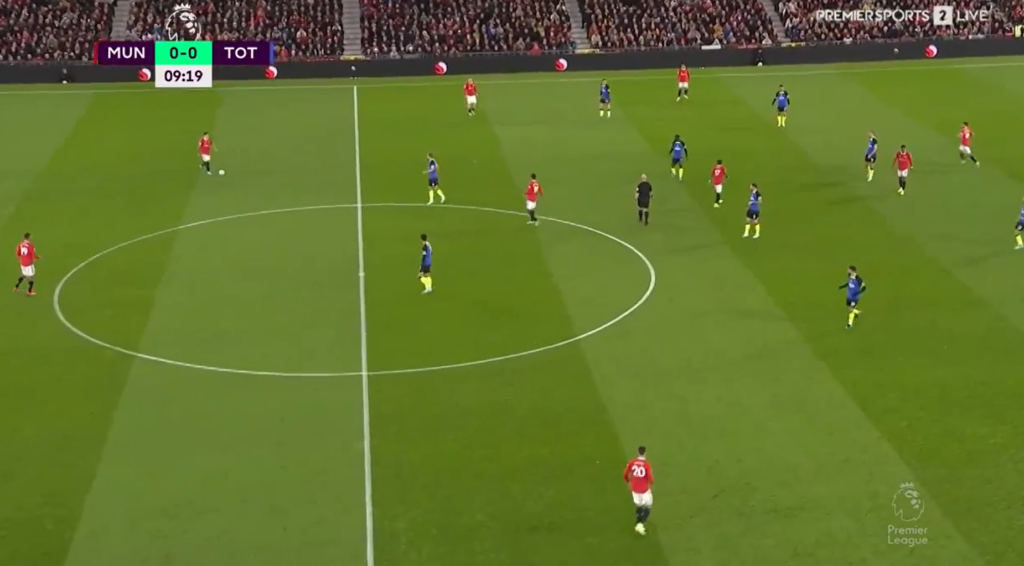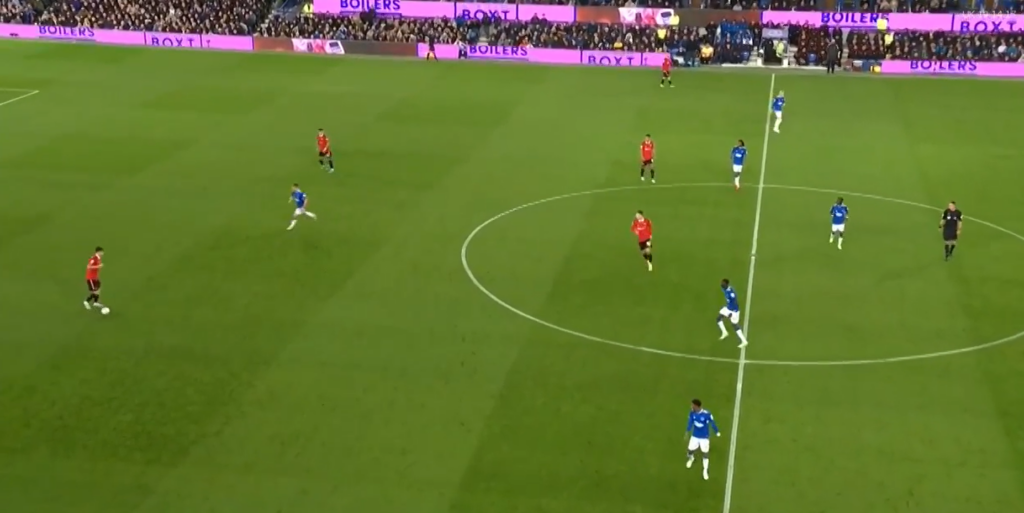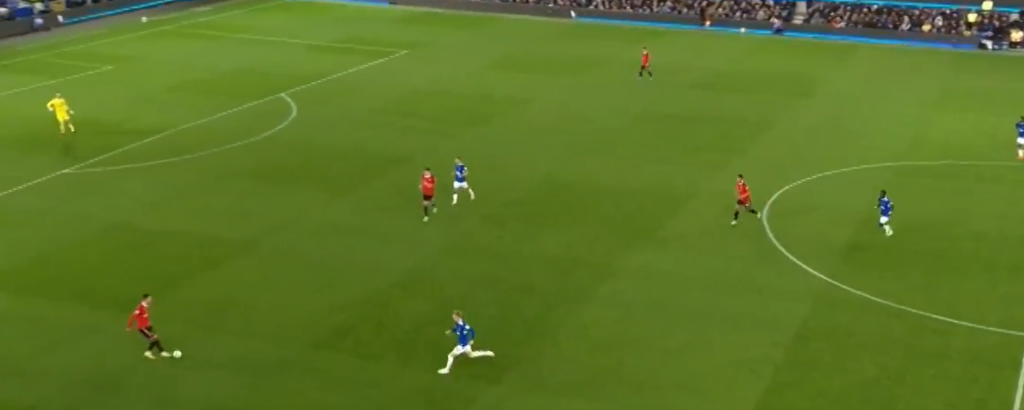Manchester United’s possession has been quite poor of late, with the ball being forced forward a lot and not being held well.
The Manchester United team needs to change the way it builds up play under Erik ten Hag, abandoning the possession strategy completely for now will not work well in the long run if United want to use it.
The absences of Lisandro Martínez and Luke Shaw have hurt a lot. They are the two most press-resistant players at the club, who also happen to be United’s best problem solvers in the first phase. Their return will possibly see the Dutchman emphasise possession more, but he must lay foundations in the meantime.
Ten Hag must make his game model clear, and tweak his tactics within it to suit his available personnel until key players return. UtdDistrict have some suggestions on what United can do.
Read More: Harry Maguire sends Man United fans three-word message after Copenhagen star makes claim
The 3-2-5/2-3-5 is one of the most popular possession shapes in elite-level football, but sometimes people misunderstand how it works. It isn’t just straight lines of players in fixed spaces, it contains many sub-units and can be highly dynamic with a lot of room for rotations – a key aspect of Erik ten Hag’s previous sides.
United used this shape, amongst others, for periods last season, most notably from early October to mid-January time. They rotated this and a 3-1-6 shape, but a lot is required of the ‘one’ in this, and United don’t have the players to make this effective in their buildup.




The idea behind the 3-1-6 currently is to overload the last line and have second-ball winners in close proximity to swarm the ball when United go long, but this isn’t working well. A 3-2-5 would smooth out United’s buildup, help the side to control possession more, and get more from the likes of Onana, who is an excellent passer out from the back.
United’s midfield profiles have been a big talking point, but they can easily create the double pivot in ways that suit the players available. Below I look at two combinations United can utilise, we’ll take this to be United’s base formation:

Option one:

With Amrabat in the six, and this works for Casemiro too, have him drop & face play, splitting the CBs in the process. This is where he provides the most value in possession and looks most comfortable, as he has shown at United so far and previously at Fiorentina. Diogo Dalot inverts, he is one of the side’s best central receivers, and starting higher, Mason Mount can drop to receive on the half turn and drag the opposition around.
The left-back holds wide as an out-ball option, this allows Marcus Rashford to go inside – where he thrives. The right winger drops to have a presence wide on the right to receive, Facundo Pellistri doing this led to United’s winner against Fulham. Amad Diallo could thrive doing this once he returns.
These rotations create spaces & work to the players’ strengths, and Onana has plenty of options for passes. He can build short with the centre-backs and six to go from there, clip wide to play around a press, and – if pockets open up through Mount’s high -> deep movement – go direct to Højlund/Rashford.
If that movement goes unfollowed, Mount has space to turn and drive. Hannibal Mejbri and Kobbie Mainoo could also both perform this role. If the CM is followed, we could see pockets of space open up behind the opposition midfield, and as André Onana showed in the UCL final he has the quality to break a press by going straight to the CF.
Option two

In this setup, with Kobbie Mainoo in the six, we can keep the six in the midfield line due to the youngster’s receiving quality. Onana can step up and split the central defenders, with Dalot fully inverting and Wan-Bissaka coming slightly inside, where he both offers support to the central players but remains available as an out ball and can receive in an area that suits him better.
Mount and Bruno Fernandes remain higher with Rashford and Pellistri dropping slightly whilst remaining wide, to stretch the opposition laterally.
Again Onana has several options and the team is well-spaced, but United can commit more bodies higher up due to the pivot’s comfort receiving the ball under pressure. Dalot-Mainoo as a ‘pivot’ forms a box midfield to pack the middle, and AWB is close by for support. This setup would be ideal in games where United hold more ball possession, and can afford to take the risk of committing more players high up the pitch.
In both setups, once Ten Hag’s side have worked the ball to the final third, Mount/Dalot can join the last line on their respective sides to form the 3-1-6 shape, creating dynamic superiorities and overloading the last line in moments which, crucially, will not leave huge spaces between defence & attack.
The closer proximity of the players, having built up properly to reach the final third instead of forcing it there, will make United’s press more compact and allow them to sustain pressure better. This will also reduce the physical demand on players, which right now is far too high – as evidenced by the injuries.
These are some of the changes that UtdDistrict think would improve Manchester United right now, game control would be much better as would ball progression. It would also create more manageable physical demands for players. Luke Shaw will possibly return after the international break, which would be huge for United, but Ten Hag must be enforcing his principles by then.